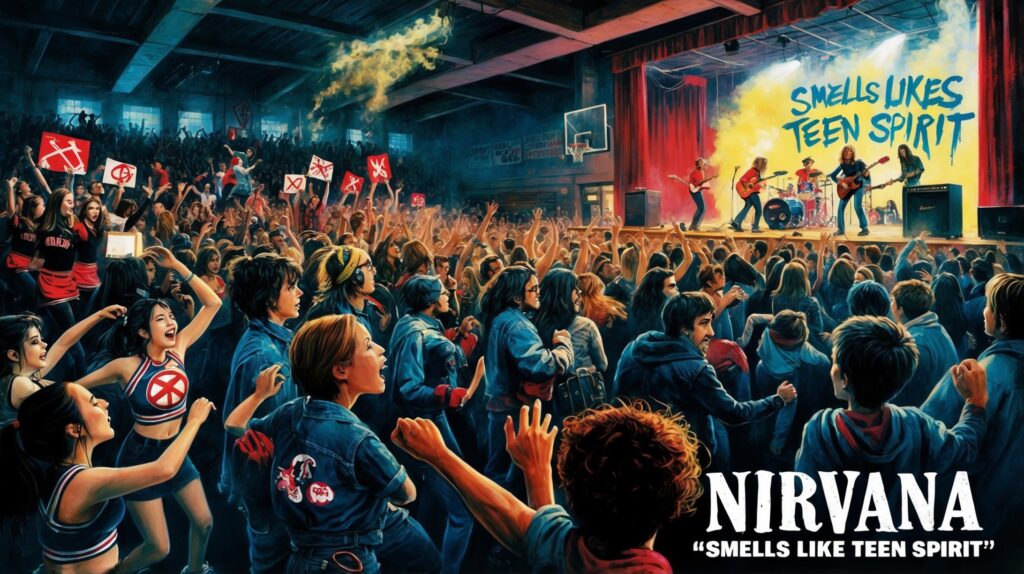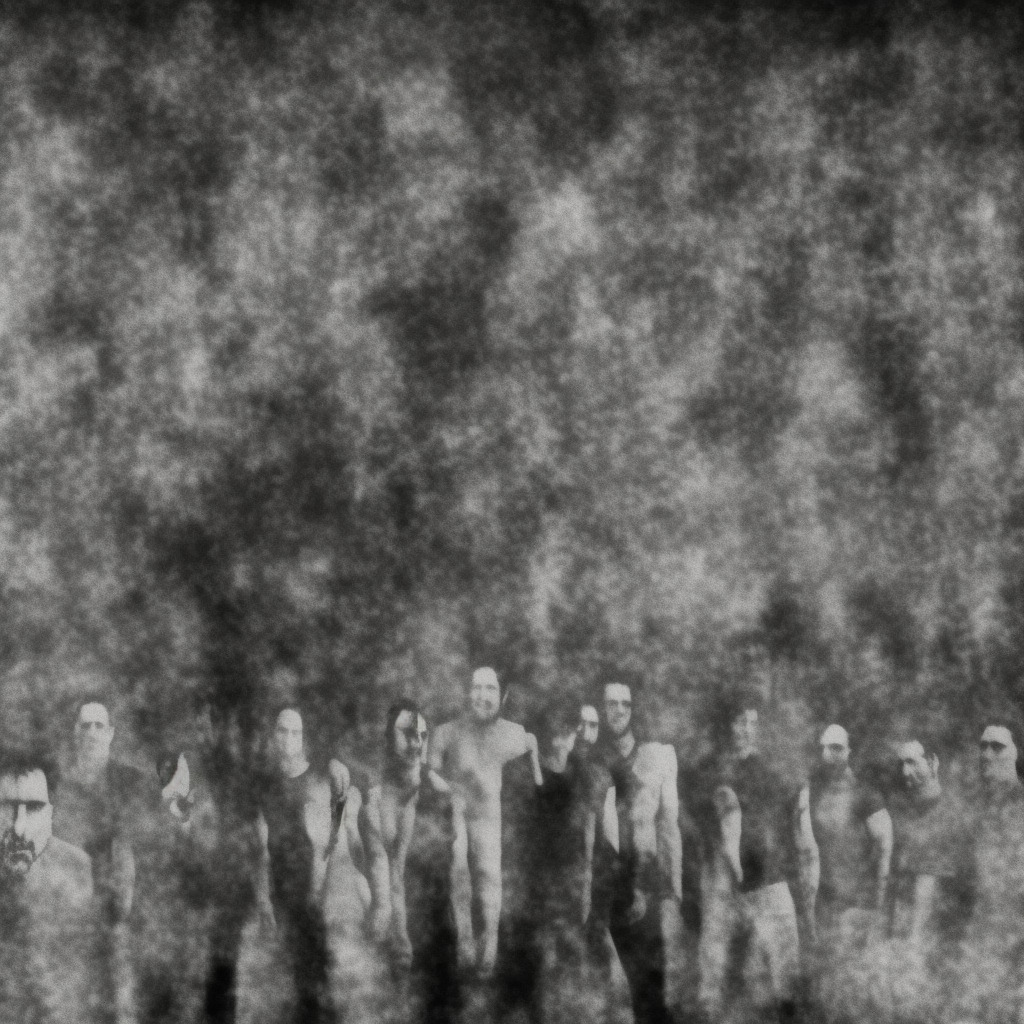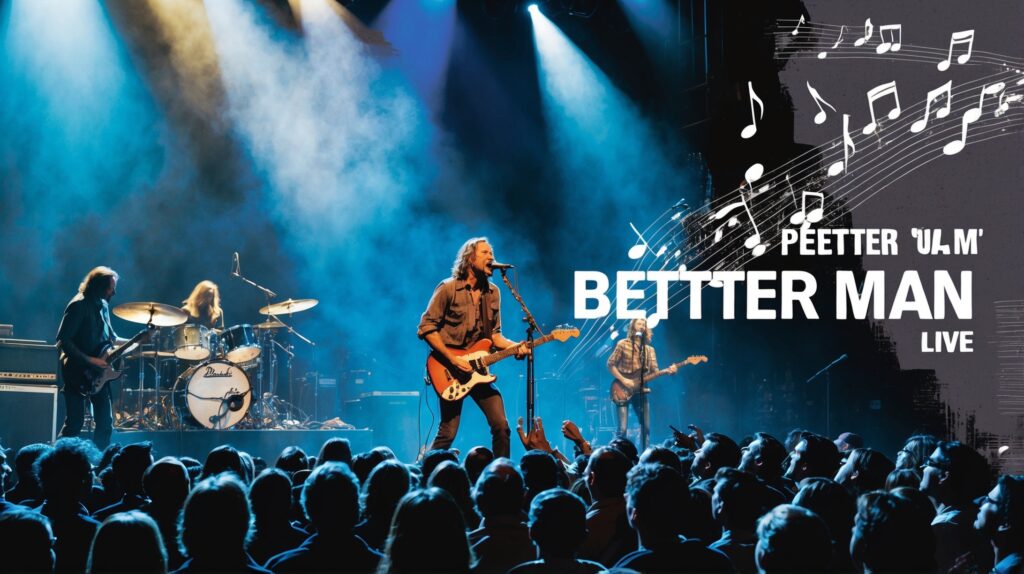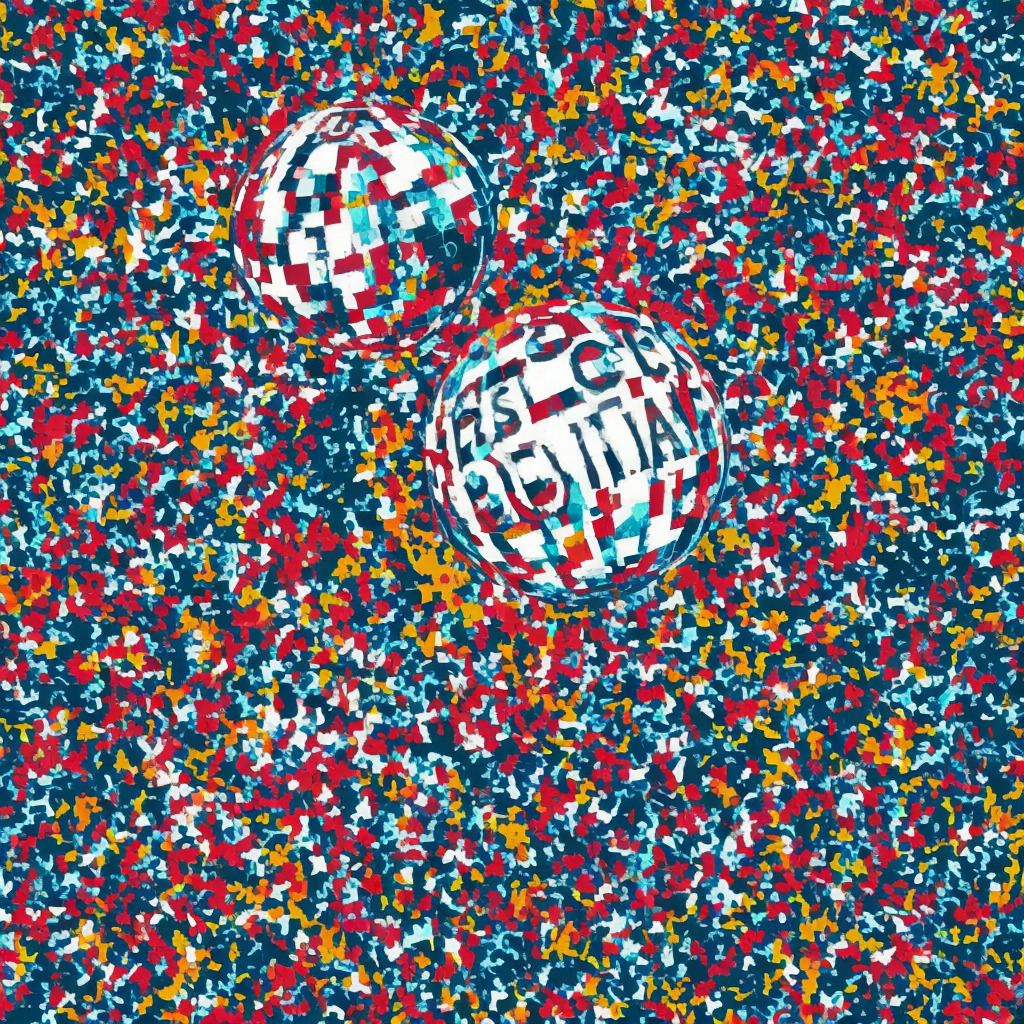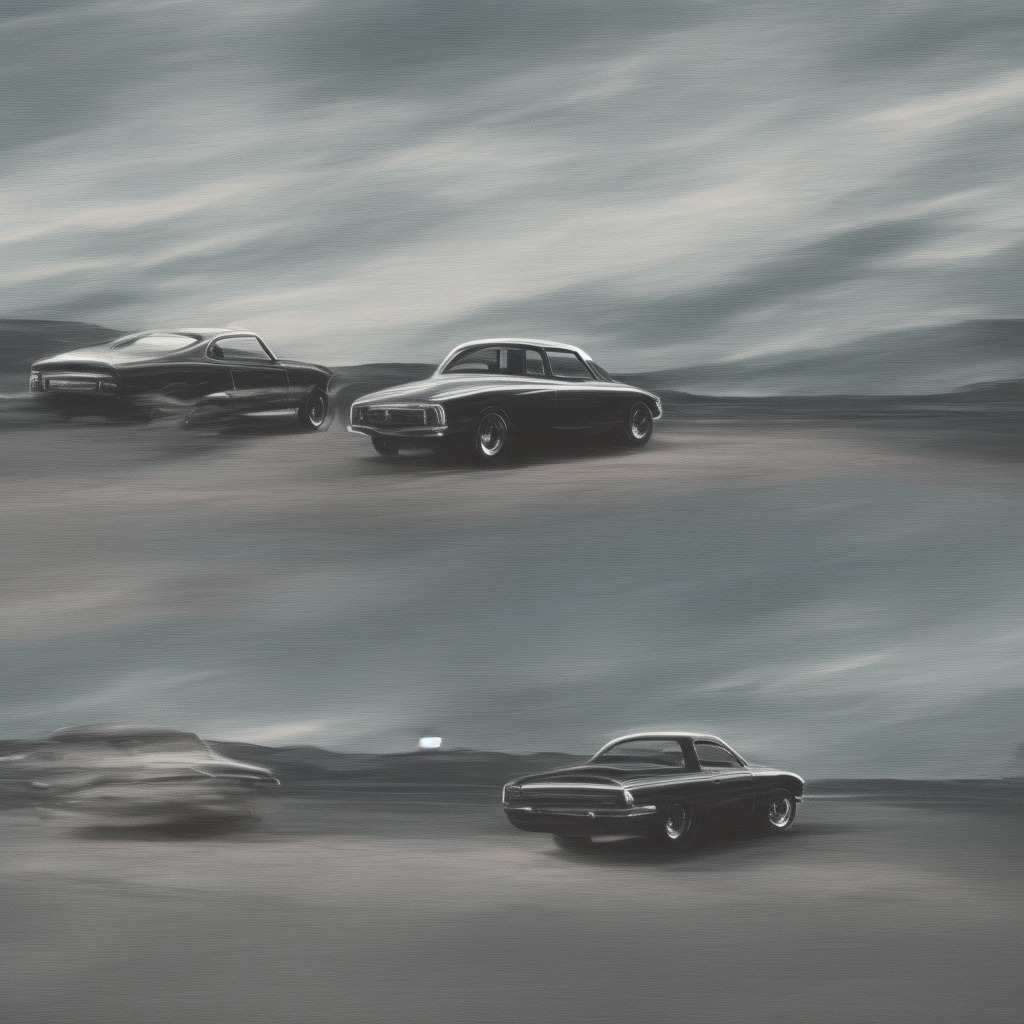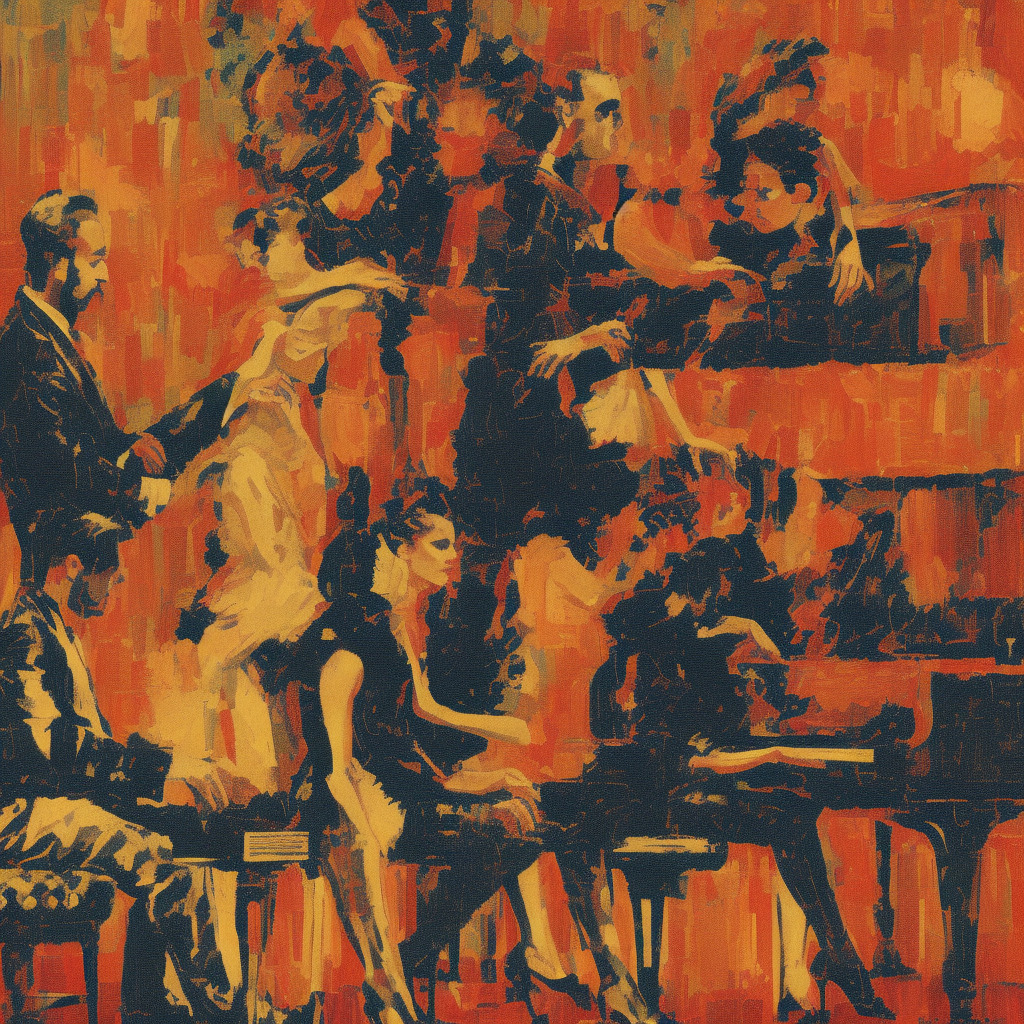The Enigmatic Icons: Nirvana’s Journey to ‘Teen Spirit’
Nirvana, spearheaded by the enigmatic Kurt Cobain, erupted onto the music scene, fundamentally shifting rock’s landscape with their groundbreaking hit ‘Smells Like Teen Spirit’.
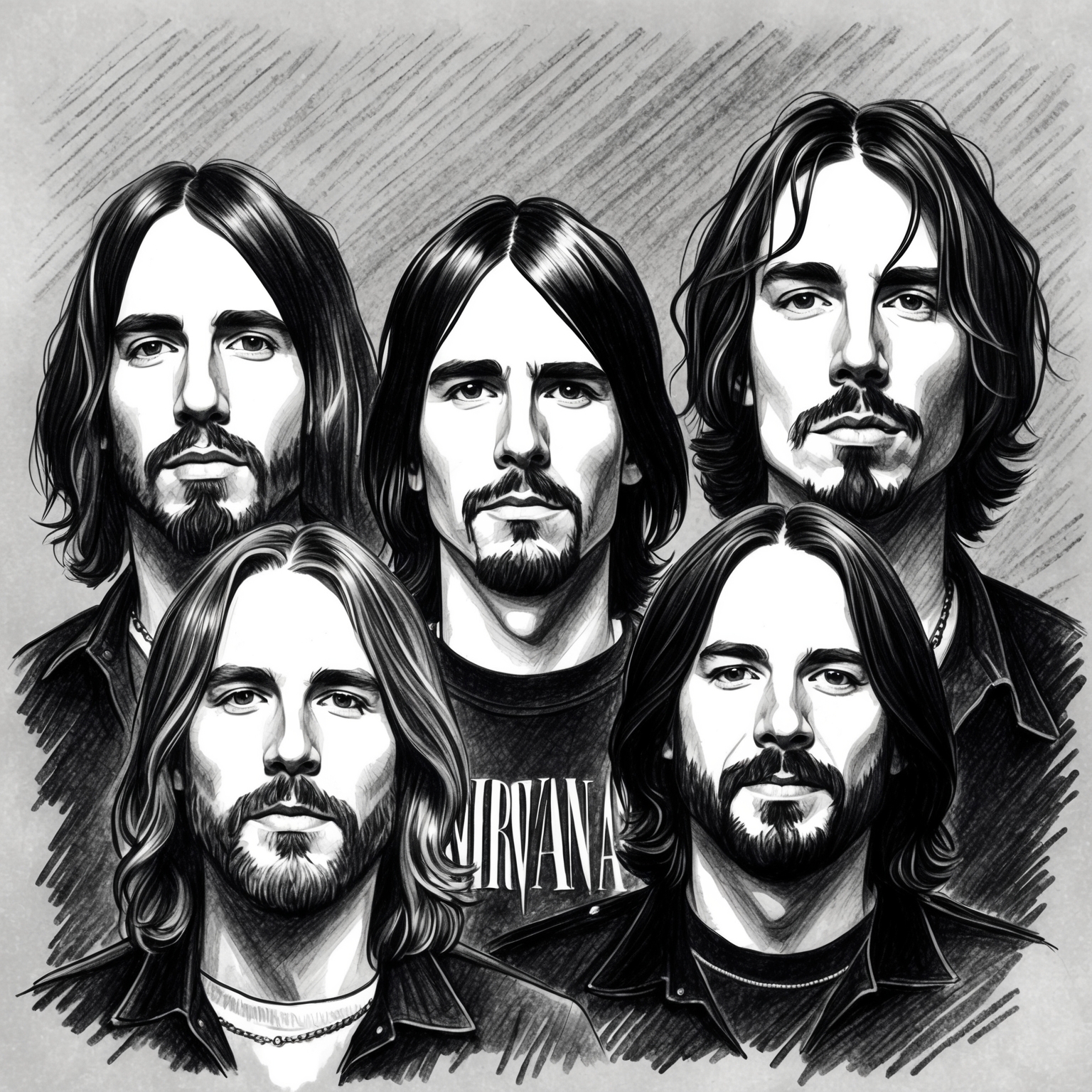
Nirvana, fronted by the captivating and often enigmatic Kurt Cobain, emerged from the grunge scene of Seattle to become one of the most influential rock bands of the 1990s. Composed of Cobain, bassist Krist Novoselic, and drummer Dave Grohl, the band is often credited with bringing alternative rock into the mainstream, with their raw and powerful sound that captivated audiences worldwide. The release of ‘Smells Like Teen Spirit’ marked a pivotal moment in their career, catapulting them from underground darlings to global icons almost overnight.
Born out of the dynamic Seattle music scene, Cobain’s early life was characterized by a fascination with music and art, which later channeled into Nirvana’s evolving sound. Before hitting the big time, Cobain and Novoselic had churned through various band formations and names, finally solidifying their lineup with the addition of Grohl in 1990, just a year before ‘Nevermind’—the album featuring ‘Smells Like Teen Spirit’—was released. This period was crucial, as it represented the band’s full embrace of a sound that combined punk rock aggression with lyrical introspection.
When ‘Smells Like Teen Spirit’ exploded onto the scene, it did so against the backdrop of a music industry saturated with polished pop acts and flashy hair metal bands. Its success heralded a seismic shift in popular music, where authenticity and grit replaced gloss and glam. This shift wasn’t just a cultural moment; it was a commercial boon that cemented Nirvana as a leading force in rock music. Their collaboration and innovation brought a raw edge that resonated with a disenchanted youth culture, establishing Nirvana as the voice of a generation.
The Genius Behind Nirvana’s Sound: Kurt Cobain
Explore Kurt Cobain’s journey as the mastermind composer behind Nirvana’s groundbreaking sound. Dive into his influences, unique style, and the legacy he left with compositions like ‘Smells Like Teen Spirit.’
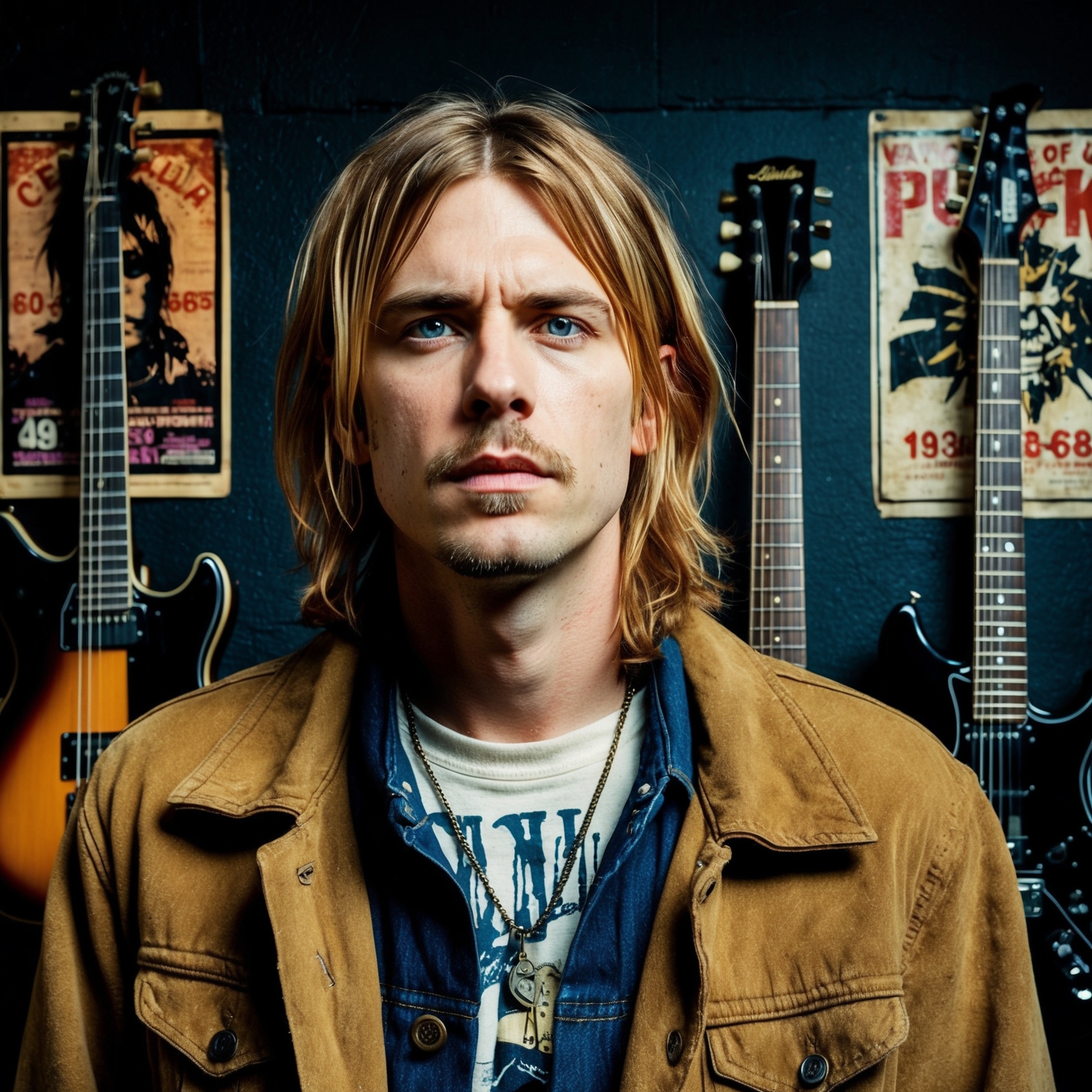
Nirvana’s iconic frontman, Kurt Cobain, was not just the face of the grunge movement but also a profound composer whose influence endures even decades after the band’s debut. Born in Aberdeen, Washington in 1967, Cobain grew up immersed in the punk rock scene, a culture that shaped his artistic approach. Despite the seemingly abrasive persona projected through his music, Cobain’s compositions often carried a deeply introspective tone, exploring themes of alienation, societal disdain, and personal demons. The combination of his raw lyrics with gritty guitar riffs created a signature sound that spoke to a generation feeling disenfranchised.
Cobain’s compositions were heavily influenced by a wide range of musical styles and artists. He drew inspiration from legendary rock bands like The Beatles and Led Zeppelin, and his punk influences came directly from the underground punk scene, particularly bands like the Melvins and The Stooges. This mélange of influences fostered a unique sound that was both familiar yet groundbreaking, encapsulating the raw emotion and energy that defined the grunge era.
While Cobain’s partnership with fellow band members Krist Novoselic and Dave Grohl was integral to Nirvana’s sound, his role as the primary composer lent the band its distinct aural identity. Cobain’s compositional technique was unorthodox; he preferred structure born out of spontaneity and raw emotion over polished perfection. His compositions, like ‘Smells Like Teen Spirit,’ often began with a simple guitar riff around which the whole arrangement organically developed. This approach contributed to the song’s dynamic energy and the unpredictability that fans admired. Cobain’s ability to blend stark lyrical narratives with powerful melodies was crucial in making ‘Smells Like Teen Spirit’ an anthem for an entire generation.
Celebrating the Impact: Awards, Accolades, and Iconic Covers
Nirvana’s “Smells Like Teen Spirit” has not only garnered numerous awards and nominations, but it has also inspired countless covers and appeared in various media, cementing its legacy as a cultural icon.
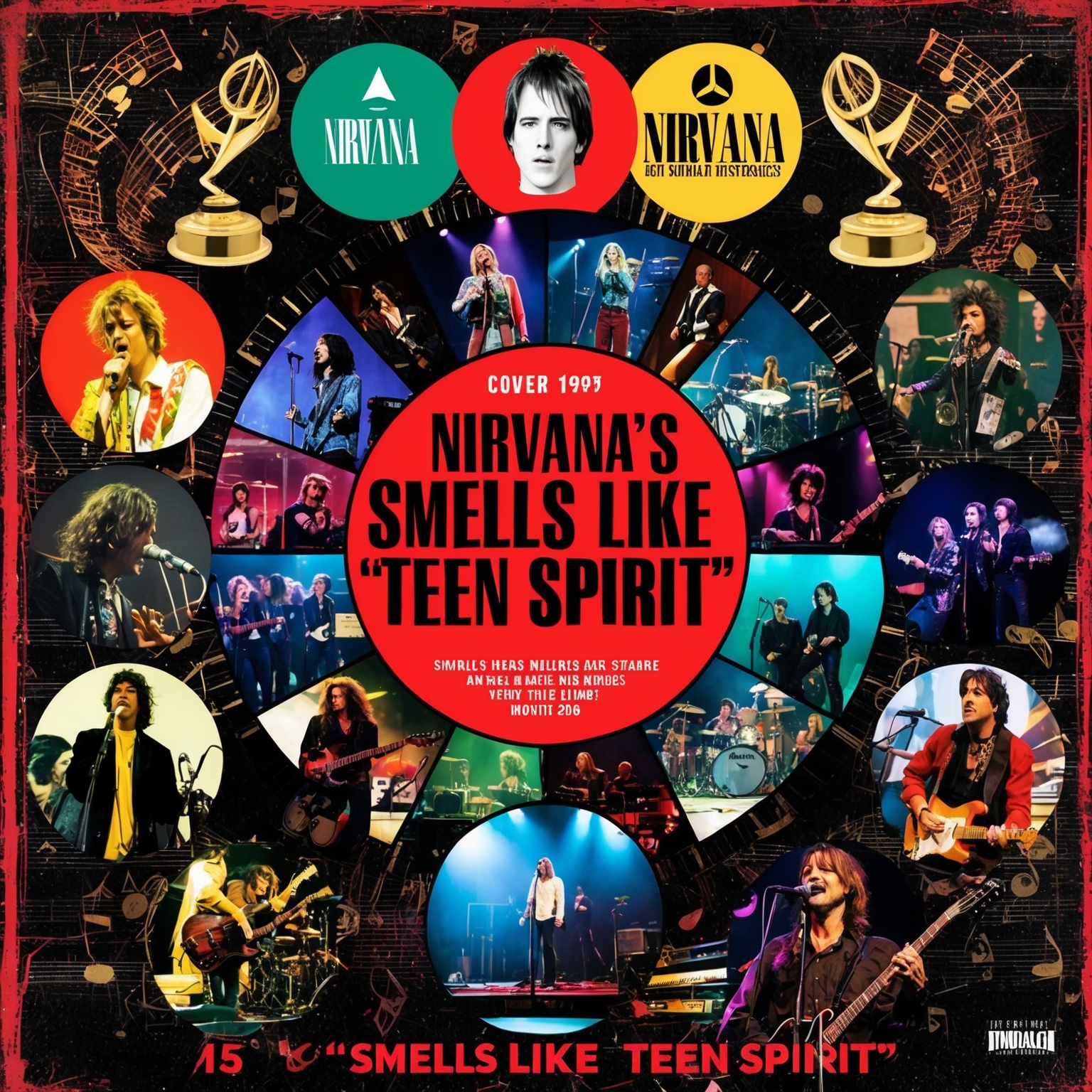
Awards and Nominations: A Testament to its Influence Nirvana’s “Smells Like Teen Spirit” emerged as a pioneering force in the early 1990s music scene, not only dominating the charts but also raking in numerous accolades. Although the song didn’t clinch a Grammy, it was nominated for Best Hard Rock Performance in 1993. Winning the Best Single award at the 1992 NME Awards, the track’s global resonance was undeniable, receiving commendations from critics worldwide. Several organizations have since recognized the song’s impact, including its inclusion in the Grammy Hall of Fame and its induction into the Rock and Roll Hall of Fame’s list of songs that shaped rock and roll. The ongoing recognition validates its enduring significance.
Iconic Covers Breathing New Life into a Grunge Anthem Over the years, numerous artists across various genres have paid homage to “Smells Like Teen Spirit” through covers, reflecting its broad and timeless appeal. Tori Amos was among the first to reinterpret the track, giving it a haunting, piano-driven rendition. The song’s grunge spirit was also transformed by jazz artist Jamie Cullum, who infused it with a unique swing feel. Even orchestras, like the Vitamin String Quartet, have ventured into covers, illustrating the song’s adaptability and the wide range of artists inspired by it. Each cover further cements the song’s robust influence on artists worldwide.
Cultural Imprint: Beyond Music and into Multimedia “Smells Like Teen Spirit” has embedded itself into popular culture beyond the confines of music. Its presence in films like “Moulin Rouge!” and television shows such as “Supernatural” showcases its far-reaching impact. Video games have also captured the song’s essence, including its notable feature in games like “Guitar Hero 5” and “Rock Band.” These appearances demonstrate the track’s lasting legacy, emphasizing how it continues to capture the imaginations of new generations. Its cultural footprint remains significant, underlining the song’s multifaceted appeal throughout the decades.
Rising to the Pinnacle of Musical Glory
“Smells Like Teen Spirit” climbed to the top of the charts, launching Nirvana to superstardom and leaving an indelible mark on music history.

“Smells Like Teen Spirit” was released by Nirvana on September 10, 1991, as the lead single from their second album, “Nevermind”. Upon its release, the song initially debuted at the lower end of the Billboard charts, but it quickly gained momentum. By January 1992, it had climbed to No. 6 on the Billboard Hot 100 chart, a remarkable feat for a band from the alternative rock scene making waves in the mainstream. This success marked a transformative point in Nirvana’s career, as “Smells Like Teen Spirit” became their breakthrough hit, catapulting them to international fame.
The song’s commercial performance was bolstered by strategic marketing and a cleverly crafted image that appealed to the grunge and alternative youth culture of the early ’90s. The music video, with its iconic depiction of a high school pep rally gone chaotic, played extensively on MTV, effectively driving the song into the popular consciousness and fueling its chart performance. Additionally, the label launched an extensive promotion campaign, including performances in key venues and appearances on major television shows, further amplifying its reach.
Public and critical reception of “Smells Like Teen Spirit” was overwhelmingly positive, propelling it to become an anthem for the Generation X movement. Critics praised its raw energy and embodiment of the disaffected youth sentiment. Over three decades after its release, the song continues to enjoy substantial streaming numbers across platforms such as Spotify and Apple Music, with countless playlists—including ’90s best hits—featuring the track prominently. This enduring appeal has cemented its legacy as one of rock’s defining moments.
The economic impact of “Smells Like Teen Spirit” is equally compelling. The song’s success significantly boosted sales for the “Nevermind” album, which eventually surpassed 10 million copies sold in the U.S. alone, earning a coveted Diamond certification. It also laid the foundation for Nirvana’s unprecedented commercial success, influencing their future releases, tours, and merchandising.
Revolutionizing Music Videos: The Visuals of ‘Smells Like Teen Spirit’
The ‘Smells Like Teen Spirit’ music video, directed by Samuel Bayer, captured the rebellious spirit of the early 90s. Set in a rowdy high school gymnasium, it propelled Nirvana and grunge into the mainstream, becoming a cultural and critical success.
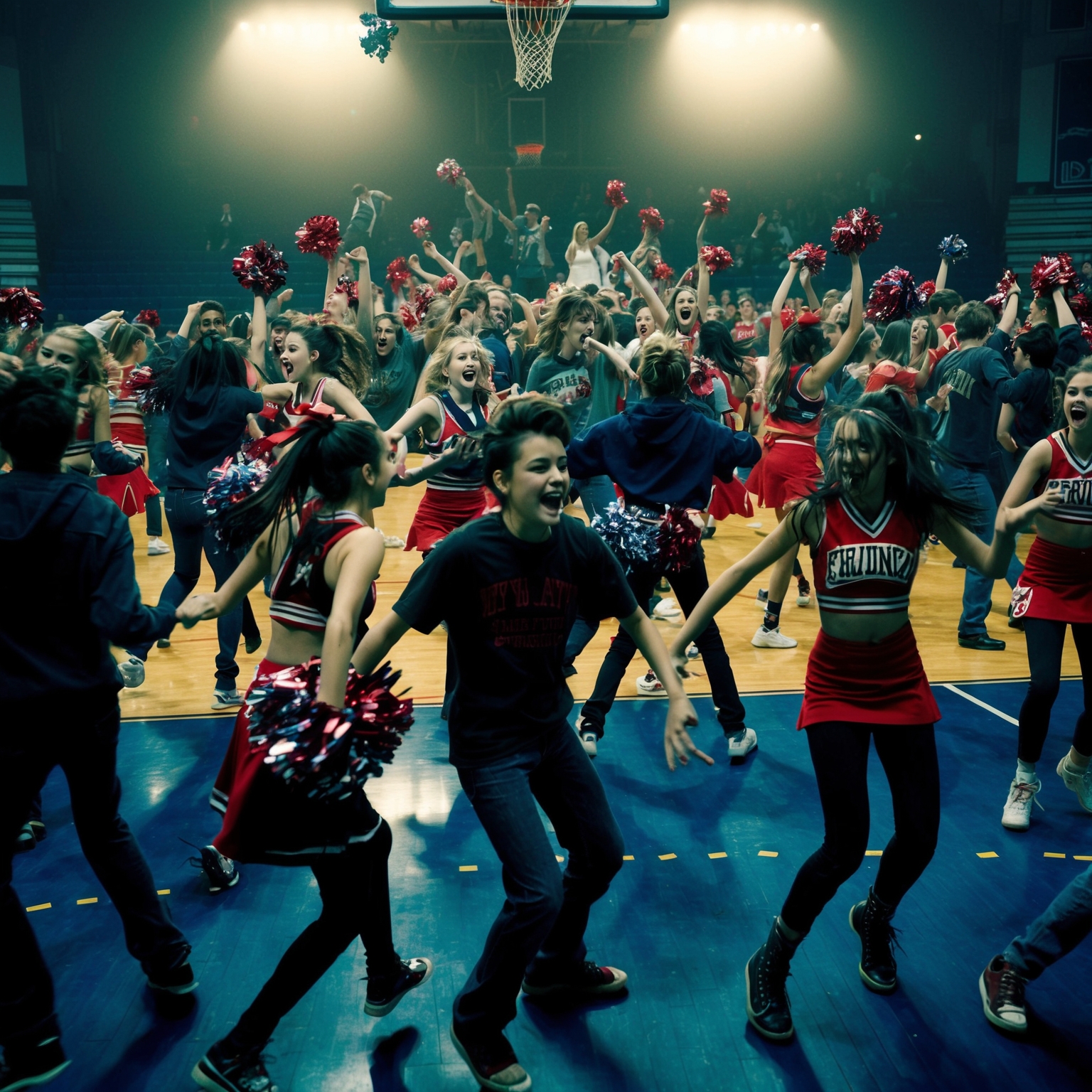
Nirvana’s ‘Smells Like Teen Spirit’ music video is as iconic as the song itself, and stands as one of the most influential visuals in music history. Directed by Samuel Bayer, the video captures the raw energy and rebellious spirit of both the song and the grunge era that Nirvana spearheaded. Set in a chaotic high school gymnasium, it features a spontaneous and anarchic pep rally that evolves into a full-blown frenzy, with cheerleaders donning anarchist symbols and teenagers reveling in the chaos. This setting visually amplifies the song’s defiance and countercultural message, echoing the sentiments of disenchantment found within the lyrics.
The music video rapidly became a cultural phenomenon, significantly boosting the song’s popularity beyond radio and album sales. MTV played a pivotal role in this, as it heavily rotated the video, making it virtually ubiquitous on the channel at the time. This exposure brought grunge into the mainstream, effectively catapulting Nirvana—and alternative rock as a whole—to the forefront of popular music. The raw and unpolished nature of the video resonated with a generation looking for authenticity, impacting beyond conventional pop video aesthetics of the time.
Critically lauded for its innovative approach, the video won numerous accolades, including several MTV Video Music Awards nominations. The decision to opt for Bayer, a then-unknown director, was made by Kurt Cobain himself after being impressed by the director’s portfolio. The choice paid off as his unique style complemented Nirvana’s raw sound and ethos flawlessly. Interestingly, the video didn’t feature any celebrity cameos, adhering to its theme of authentic rebellion driven by ordinary youths, yet it included an array of local teenagers, adding to its genuine feel and connection with the audience.
The Musical Anatomy of ‘Smells Like Teen Spirit’
Explore the musical structure of ‘Smells Like Teen Spirit’, Nirvana’s breakthrough track. From its iconic guitar riff to its contrasting verse-chorus dynamics, the song captures the essence of grunge, marking a pivotal evolution in the band’s discography.
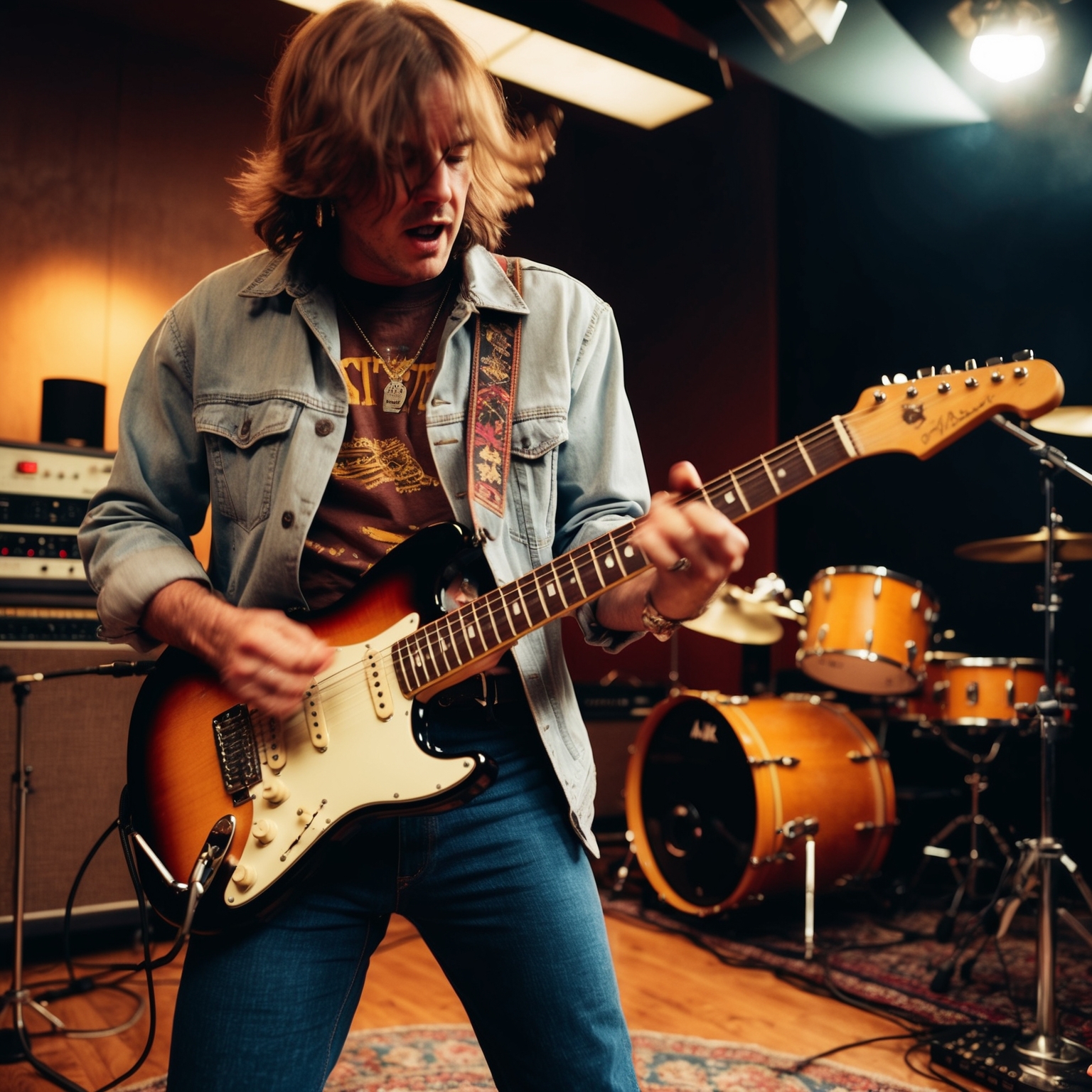
‘Smells Like Teen Spirit’ by Nirvana is a masterclass in the grunge rock sound that defined a generation. The song is set in the key of F minor and follows a traditional verse-chorus structure. It opens with a now-iconic guitar riff that establishes the sonic atmosphere for the track, characterized by its raw power and simplicity.
The song follows a 4/4 meter and is characterized by its relentless energy, with a tempo set at a moderate pace of 117 beats per minute. The chord progression in the verses is a cyclical repetitive loop of power chords (F5-B♭5-A♭5-D♭5), whereas the chorus employs an ascending chord progression that shifts the mood from introspective to explosive, showcasing the band’s ability to create an emotional arc within a single track.
From a melodic and harmonic perspective, Nirvana’s use of distortion and dynamic shifts is a hallmark of their sound. The melody is delivered with a raw, earnest intensity by Kurt Cobain, supported by the harmonics of Krist Novoselic’s bass and Dave Grohl’s thunderous drumming. The strategic use of quiet-verses and loud-choruses highlights the band’s ability to craft a syncopated contrast, keeping the listener engaged throughout.
Instrumentation plays a significant role in crafting the song’s unique sound. Cobain’s gritty guitar tone, achieved through his Fender Mustang and distortion pedals, captures the essence of the grunge movement. Meanwhile, Grohl’s drumming is powerful yet precise, underpinning the song’s relentless drive. Novoselic’s basslines offer a foundational groove that is both rhythmic and melodic, rounding out the trio’s sound.
In the context of Nirvana’s discography, ‘Smells Like Teen Spirit’ represents a pivotal point. Coming from their second studio album, Nevermind, the song marked Nirvana’s breakthrough into mainstream success. Compared to their debut album, Bleach, the polished production and more accessible melodies in ‘Smells Like Teen Spirit’ signified an evolution in their sound, capturing a raw yet refined essence that would become a signature of their later work. The track was produced by Butch Vig at Sound City Studios, known for its state-of-the-art equipment, which contributed to the clearer sonic quality while maintaining the band’s gritty edge.
Decoding the Enigma: Analyzing the Lyrics of ‘Smells Like Teen Spirit’
Explore the enigmatic lyrics of Nirvana’s ‘Smells Like Teen Spirit’, a definitive anthem of youth disillusionment and rebellion, characterized by its abstract imagery, cultural references, and emotional depth.
It’s fun to lose and to pretend
She’s over-bored and self-assured
Oh no, I know a dirty word
Hello, hello, hello, how low
Hello, hello, hello, how low
Hello, hello, hello, how low
Hello, hello, hello
With the lights out, it’s less dangerous
Here we are now, entertain us
I feel stupid and contagious
Here we are now, entertain us
A mulatto, an albino
A mosquito, my libido
Yeah
Hey
Yay
I’m worse at what I do best
And for this gift I feel blessed
Our little group has always been
And always will until the end
Hello, hello, hello, how low
Hello, hello, hello, how low
Hello, hello, hello, how low
Hello, hello, hello
With the lights out, it’s less dangerous
Here we are now, entertain us
I feel stupid and contagious
Here we are now, entertain us
A mulatto, an albino
A mosquito, my libido
Yeah
Hey
Yay
And I forget just why I taste
Oh yeah, I guess it makes me smile
I found it hard, it’s hard to find
Ooh well, whatever, nevermind
Hello, hello, hello, how low
Hello, hello, hello, how low
Hello, hello, hello, how low
Hello, hello, hello
With the lights out, it’s less dangerous
Here we are now, entertain us
I feel stupid and contagious
Here we are now, entertain us
A mulatto, an albino
A mosquito, my libido
A denial
A denial
A denial
A denial
A denial
A denial
A denial
A denial
A denial
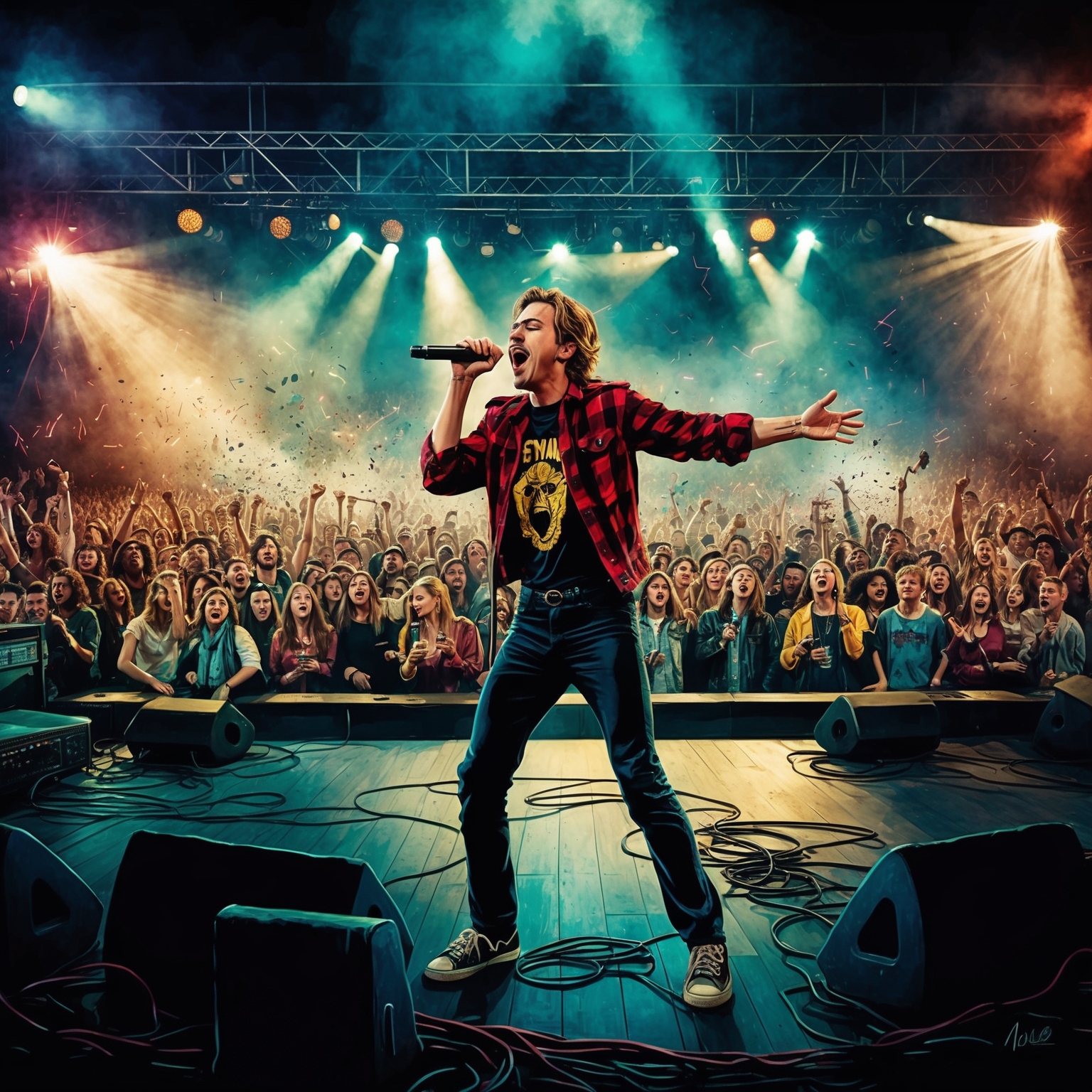 Nirvana’s ‘Smells Like Teen Spirit’ is renowned for its enigmatic and seemingly nonsensical lyrics, which have sparked endless debate and interpretation among fans and critics alike. At its core, the song captures the disillusionment and angst of Generation X, channeling a sense of rebellion and defiance against mainstream culture. The recurring themes of apathy, alienation, and the search for identity resonate deeply with a generation that felt misunderstood and frustrated by societal norms. While the lyrics may appear abstract, their chaotic nature embodies the very ethos of a grunge movement that sought to challenge conventions.
Nirvana’s ‘Smells Like Teen Spirit’ is renowned for its enigmatic and seemingly nonsensical lyrics, which have sparked endless debate and interpretation among fans and critics alike. At its core, the song captures the disillusionment and angst of Generation X, channeling a sense of rebellion and defiance against mainstream culture. The recurring themes of apathy, alienation, and the search for identity resonate deeply with a generation that felt misunderstood and frustrated by societal norms. While the lyrics may appear abstract, their chaotic nature embodies the very ethos of a grunge movement that sought to challenge conventions.
The song’s narrative is delivered from a first-person perspective but lacks a linear storyline. Instead, it offers a snapshot of chaotic teenage emotions and experiences. This approach mirrors the punk rock ethos, emphasizing authenticity and raw expression over polished narratives. The lyrics, rich in phrases and imagery that range from bizarre to profound, create a tapestry of youthful rebellion and confused introspection. This narrative style enhances the song’s impact, turning it into an anthem for those who felt voiceless.
Literary devices play a crucial role in the lyrical construction of ‘Smells Like Teen Spirit.’ Cobain’s use of metaphors and alliteration, often combined with abstract imagery, paints a vivid — if somewhat cryptic — picture. The opening line ‘Load up on guns, bring your friends’ uses contradiction to evoke a sense of reckless defiance mixed with a call for camaraderie. The recurring phrase ‘a mulatto, an albino’ serves as a metaphor for diversity and acceptance among outcasts and misfits. Through these literary techniques, the lyrics transcend simple storytelling, becoming a canvas for listeners to project their interpretations.
Cultural and historical references within the lyrics further enhance their significance. Released in the early 90s, during a time of cultural shift and economic uncertainty, the lyrics mirrored the societal unrest and the desire for change amongst the youth. References to consumer culture and conformist pressures resonate with the dissatisfaction of the era, reflecting a broader critique of societal expectations. The song’s cultural commentary underscores its lasting impact, serving as a rallying cry for those seeking authenticity.
Though the lyrics are open to various interpretations, they elicit a strong emotional response, evoking feelings of rebellion, confusion, and empathy from listeners. Their relatability lies in their ability to articulate the universal struggle for identity and belonging, striking a chord with audiences across different backgrounds. This emotional connection, coupled with Cobain’s passionate vocal delivery and the band’s raw musical energy, has cemented the song’s place as an enduring anthem.
🎸 Did you know? Smells Like Teen Spirit was inspired by a teen deodorant slogan! 😲 Cobain’s anthem turned grunge into a global sensation! #Nirvana #GrungeRevolution #MusicTrivia tinyurl.com/4paay9b8
Click to Tweet

